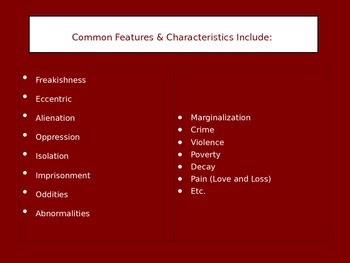

It’s Laura, the mother, who is especially suspicious, regularly wanting to talk to Margot about how things are going in a way Margot doesn’t trust. It’s not ideal, but Margot knows she’s lucky to be here, even if it means dealing with the creepy old house, the mysterious words appearing in her sleeping area, all of the rooms she’s not to be in… Now, she’s to take on the role as companion for Agatha, the family’s daughter who is weak, sick, and kept in a nursery room for constant care. Margot is rescued from a home for orphaned children by a friend of her now-deceased father. Is it normal to feel so abnormal when you’re in the midst of the biggest physical, mental, and emotional changes in your life? This reflection on the disembodied reality of being a teenager is but one of the many questions these books explore. What makes gothic YA books especially fascinating is how these stories combine all of the above-noted elements, while also adding in the strange foreignness of adolescence. Let’s take a dive into some of the best YA gothic books, ranging from titles in the YA backlist to those which are newer. Still others allow the presence of mental illness to have no defining mark on the exterior experiences of the characters. In others, though, mental illness ends up being a tool that serves as protection or one of power. In some cases, mental illness acts as a “gotcha,” wherein the reader is led to believe something is happening in a story but instead learns it’s all inside the protagonist’s head (depending on the reader and their own experiences with mental illness, this can feel damaging or it can feel empowering - every individual’s read is different). This is especially true in YA gothic books, as is another common element: the exploration of mental illness, the experiences of strange things, and either or both may or may not be accompanied by supernatural beings. There’s less romanticism in American gothic, though it’s still present. The settings are also American, with southern gothic and midwestern gothic playing into the horroresque settings and regional norms and practices. Though many of the traditional elements of gothic literature are present in its American cousin, American gothic often includes settings and situations which are uniquely American: slavery, environmental destruction, colonization, and genocide are among the big, meaty cultural elements explored in these stories.

Stephen King, Toni Morrison, and Shirley Jackson are among the most well-known American authors of gothic horror. Though gothic literature was popular across England and Germany at this time, when it emerged in the U.S., it relied on those foundations, but it found its own flavor as well. It continued to grow into popularity in the 1800s, with books like Mary Shelley’s Frankenstein, Edgar Allan Poe’s work, and Dracula among some of the biggest names. Romanticism was at its height then, and the growth of gothic literature from that era makes sense. Gothic literature is believed to have originated in England, with many crediting Horace Walpole’s The Castle of Otrano as the first gothic novel. Gothic YA books in recent years have really leaned into this marriage of horror and romance, with a whole host of variations on tropes including the haunted house, the unknown, and the sublime. That romance can be among the main characters of the story or a romantic appreciation of the language and visual aspects of the story itself.

Defined as a writing style that employs atmosphere, dark and startling scenery and imagery, and even though it’s typically associated with horror, gothic literature often has a romantic undertone - or even overtone - to it as well. Whether you consider yourself a horror fan or not, chances are you’ve read or viewed something that falls under the horror umbrella: gothic literature.


 0 kommentar(er)
0 kommentar(er)
